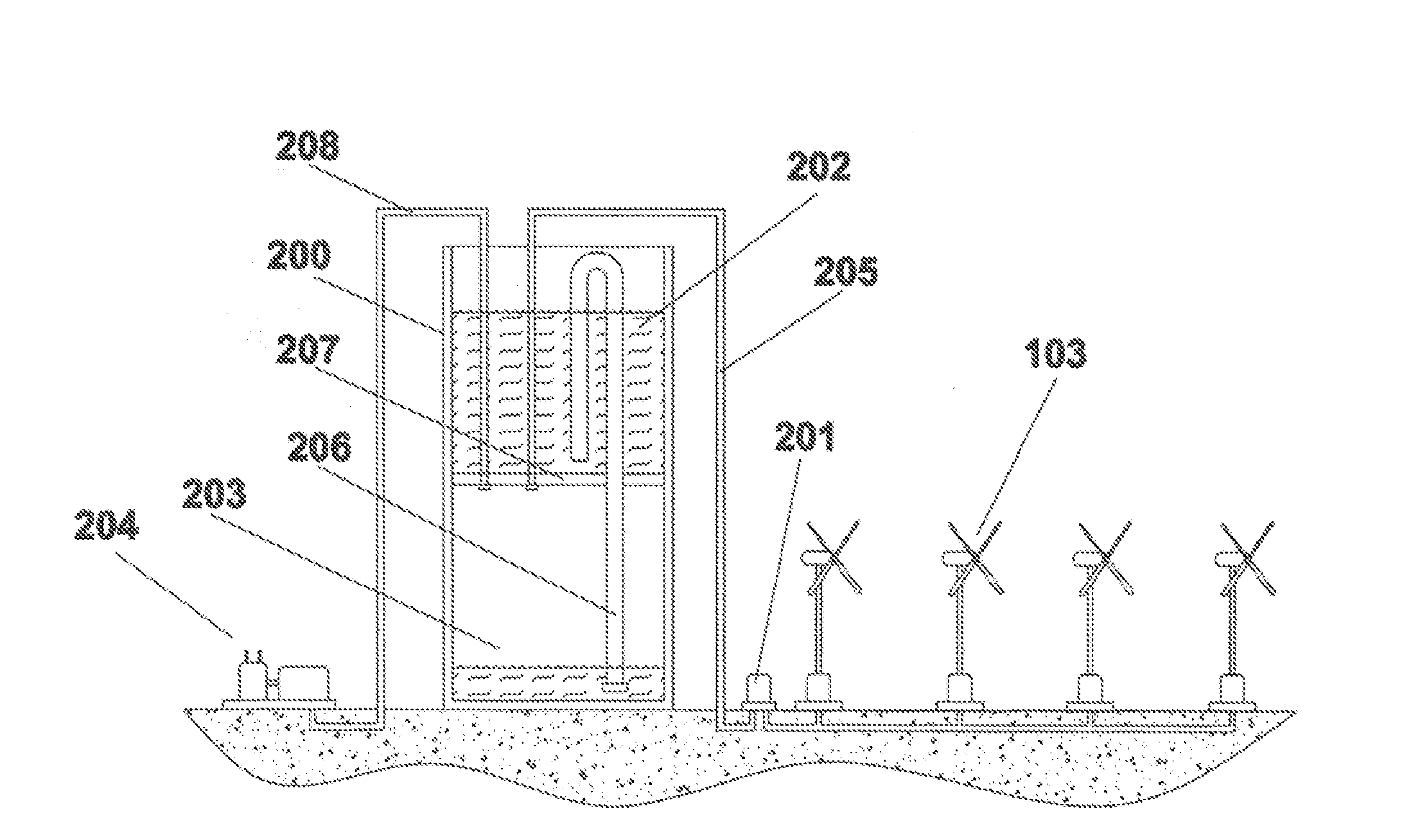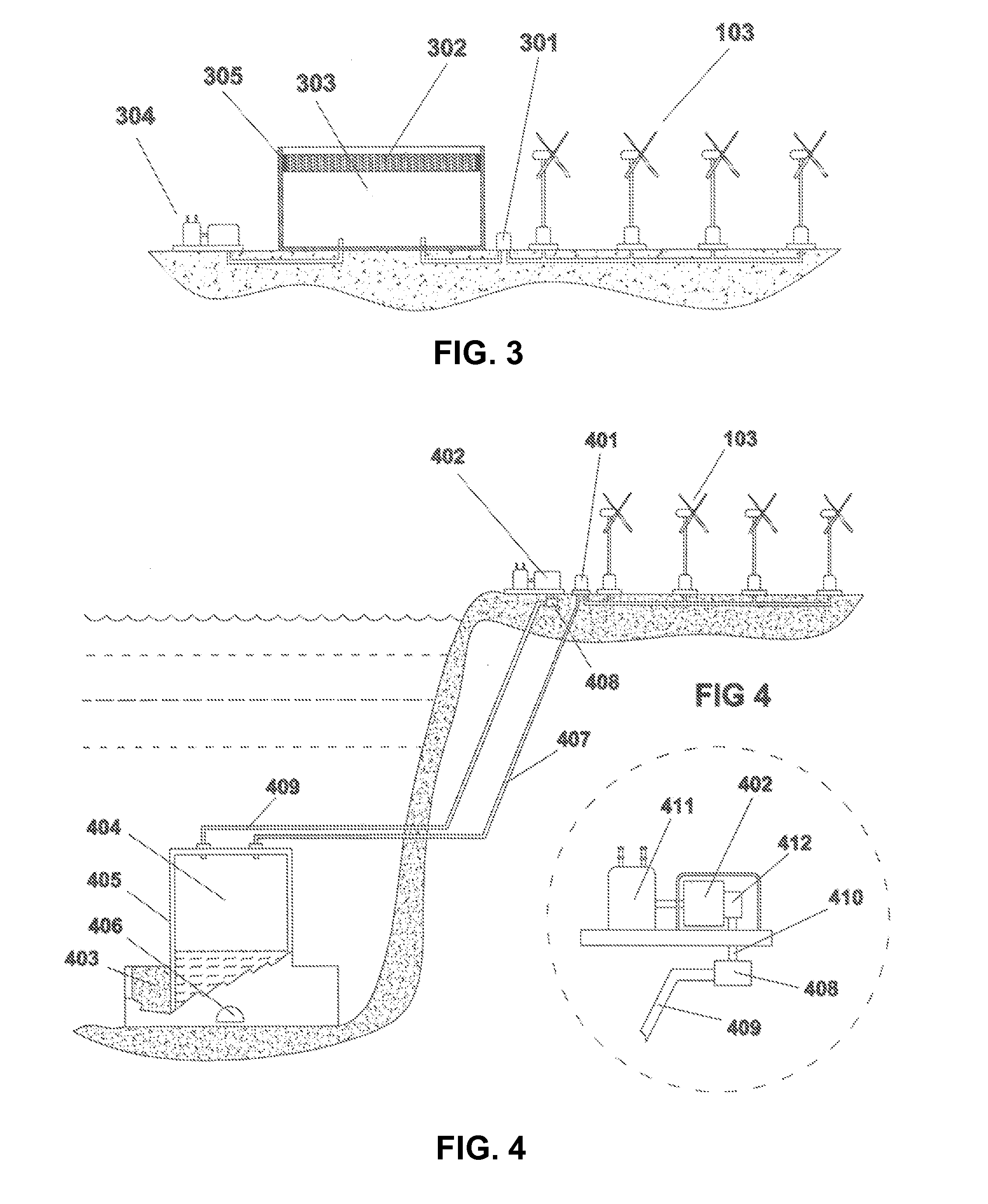Integrated wind-power electrical generation and compressed air energy storage system
a technology of integrated wind power and energy storage system, which is applied in the direction of electric generator control, machine/engine, greenhouse gas reduction, etc., can solve the problems of wind power suffering from a major negative, excessively the construction of large and expensive facilities, so as to prevent over-pressurization of storage units and maintain the required frequency stability
- Summary
- Abstract
- Description
- Claims
- Application Information
AI Technical Summary
Benefits of technology
Problems solved by technology
Method used
Image
Examples
Embodiment Construction
[0041]An integrated wind power generation and CAES storage system according to the present invention will now be described in detail with reference to FIGS. 1 through 5 of the accompanying drawings.
[0042]The invention comprises several methods and apparatuses which include one or more wind-powered air compressors or pumps, and one or more storage units for storing the compressed or pressurized air or other fluid medium. The volume of the storage unit is expanded at constant or nearly constant pressure by the compressed air or pressurized fluid inflow. Compressed air / pressurized fluid feeds with control valves feed compressed air or pressurized fluid from the wind-powered compressors or pumps to the storage units. The system includes a means for generating electricity by withdrawing compressed air or pressurized fluid from the storage units, which means may include one or more air turbines, hydraulic turbines and generators, as well as valves and feeds, and one or more governors whic...
PUM
 Login to View More
Login to View More Abstract
Description
Claims
Application Information
 Login to View More
Login to View More - R&D
- Intellectual Property
- Life Sciences
- Materials
- Tech Scout
- Unparalleled Data Quality
- Higher Quality Content
- 60% Fewer Hallucinations
Browse by: Latest US Patents, China's latest patents, Technical Efficacy Thesaurus, Application Domain, Technology Topic, Popular Technical Reports.
© 2025 PatSnap. All rights reserved.Legal|Privacy policy|Modern Slavery Act Transparency Statement|Sitemap|About US| Contact US: help@patsnap.com



